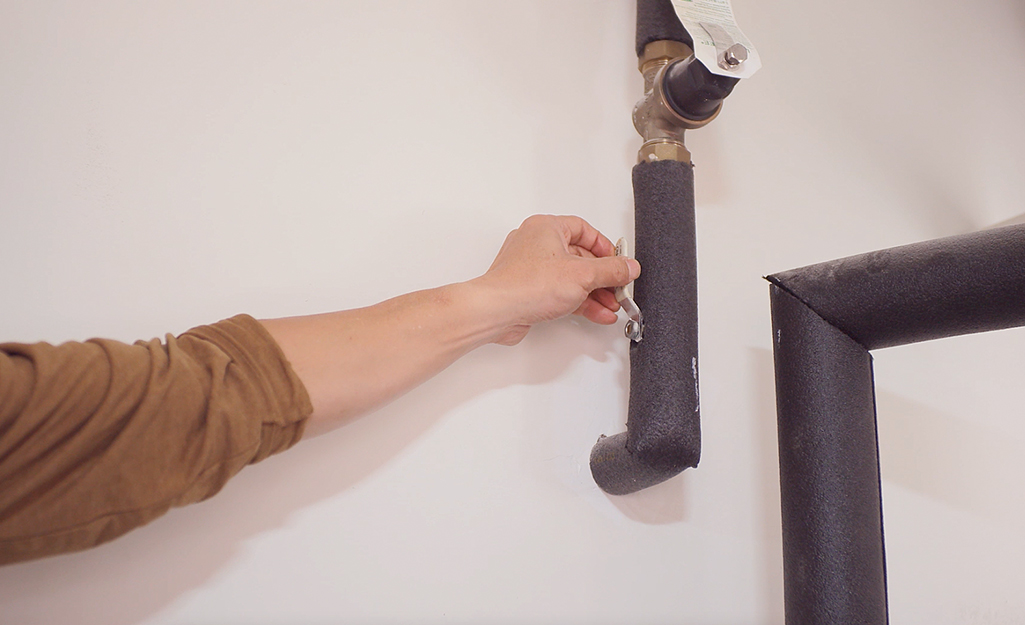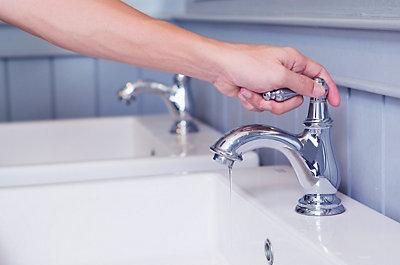Our Reasons Behind Fixing a Faulty Faucet
Our Reasons Behind Fixing a Faulty Faucet
Blog Article
Were you on the lookout for info involving How to Fix a Dripping or Leaky Faucet ?

Trickling faucets may seem like a minor aggravation, but their influence surpasses just the nuisance of the sound. From wasting water to sustaining unneeded economic costs and health and wellness dangers, overlooking a dripping faucet can result in different repercussions. In this post, we'll look into why it's critical to resolve this typical family problem immediately and successfully.
Wastefulness of Water
Ecological Effect
Leaking faucets contribute significantly to water wastefulness. According to the Environmental Protection Agency (EPA), a solitary faucet dripping at one drip per second can lose more than 3,000 gallons of water annually. This not just strains water sources however likewise affects environments and wild animals dependent on them.
Financial Expenses
Enhanced Water Bills
Past the environmental effect, trickling faucets can pump up water expenses considerably. The gathered wastefulness with time converts right into higher utility costs, which might have been stayed clear of with prompt repairs.
Potential Property Damages
Additionally, extended dripping can lead to harm to components and surface areas surrounding the tap. Water buildup can trigger staining, deterioration, and even structural concerns if left unattended, resulting in added repair service costs.
Wellness Issues
Mold and Mold Growth
The consistent existence of dampness from a dripping tap creates a perfect setting for mold and mildew development. These fungi not only jeopardize indoor air quality however additionally pose health risks, especially for individuals with breathing problems or allergic reactions.
Waterborne Conditions
Stationary water in dripping faucets can end up being a breeding ground for microorganisms and various other pathogens, boosting the risk of waterborne conditions. Impurities such as Legionella microorganisms thrive in stagnant water, potentially leading to significant health problems when ingested or breathed in.
DIY vs. Expert Repair
Pros and Cons of Do It Yourself Fixing
While some may try to fix a trickling tap themselves, do it yourself repairs include their very own set of difficulties. Without proper understanding and tools, do it yourself attempts can aggravate the problem or bring about incomplete repair work, extending the problem.
Benefits of Employing a Specialist Plumber
Employing a specialist plumber guarantees that the underlying source of the dripping tap is addressed efficiently. Plumbings have the competence and equipment to detect and repair faucet problems successfully, conserving time and decreasing the threat of further damage.
Step-by-Step Overview to Dealing With a Dripping Tap
Devices Called for
Prior to trying to take care of a leaking faucet, gather the necessary devices, consisting of a flexible wrench, screwdrivers, replacement parts (such as washing machines or cartridges), and plumber's tape.
Typical Tap Issues and Their Solutions
Recognize the type of faucet and the details issue triggering the drip. Common issues include damaged washing machines, corroded shutoff seats, or faulty O-rings. Describe manufacturer instructions or on the internet tutorials for step-by-step assistance on repair services.
Safety nets
Normal Upkeep Tips
To avoid leaking faucets, carry out regular upkeep such as cleansing aerators, evaluating for leakages, and replacing worn-out components immediately. Additionally, think about mounting water-saving gadgets or updating to extra effective fixtures.
Significance of Prompt Repairs
Resolving dripping taps as soon as they're seen stops further water wastefulness and potential damages, inevitably saving both water and cash over time.
Effect On Residential Or Commercial Property Value
Assumption of Well-Maintained Residential Or Commercial Property
Preserving a residential or commercial property in good condition, consisting of addressing upkeep problems like leaking taps, improves its regarded worth and worth among prospective buyers or tenants.
Influence on Resale Value
Features with properly maintained plumbing components, including faucets, command greater resale values in the realty market. Attending to leaking faucets can add to a favorable impact throughout residential property evaluations and arrangements.
Ecological Duty
Specific Payment to Conservation
Taking duty for dealing with leaking faucets aligns with broader efforts towards water preservation and environmental sustainability. Every person's activities collectively make a substantial impact on protecting priceless sources.
Sustainable Living Practices
By prioritizing prompt repairs and embracing water-saving practices, people add to lasting living practices that profit both present and future generations.
Verdict
Addressing a leaking faucet exceeds mere ease; it's a necessary action towards conserving water, reducing monetary prices, and securing wellness and home. Whether via DIY repairs or specialist aid, taking action to take care of leaking taps is a little yet impactful means to promote liable stewardship of sources and add to a healthier, extra sustainable future.
How to Fix a Leaky Faucet: Step-by-Step Repair Guide
A leaky faucet may seem like a simple annoyance, but if it's not fixed promptly, that leak could cost hundreds to potentially thousands. From water damage to mold, mildew, and high water bills, even a tiny leak can be catastrophic if left unattended. Damage like this can even affect the overall value of your home, so it's important to take the right approach for leaky faucet repair. You may need the help of a plumber in some cases, but we've got a few tips you can try on how to fix a leaky faucet before calling the pros.
Four Faucet Types
When you're learning how to fix a leaky faucet, the first step is knowing what kind of faucet you're working with! There are four common types.
Cartridge Faucets
Cartridge faucets come in one- or two-handled varieties. In one-handled cartridge faucets, hot and cold water combines in a single cartridge. In the two-handled versions, hot and cold water are controlled separately and mixed in the faucet.
Ball Faucets
Ball faucets have a single lever you push up and down to adjust the pressure and rotate to change the temperature. A slotted metal ball controls the amount of water allowed into the spout.
Compression Washer Faucets
They're the oldest type of faucet, but they're still used in many homes — especially older ones. Compression faucets have two separate handles that, when turned, raise or lower the washer that seals a water valve. This valve stops water from flowing through the faucet when it is turned off.
Disc Faucets
Disc faucets rarely need to be repaired due to their maintenance-free design. The water flow is controlled by two discs — the upper one raises and lowers against a fixed lower disc, creating a watertight seal. If your disc faucet starts leaking, you may need to replace the seals or clean residue buildup from the inlets.
Fixing a Leaky Faucet
Step 1: Turn Off the Water
Whether you're learning how to fix a leaky bathtub faucet or how to fix a leaky kitchen faucet, always turn off the water supply to your working area when you're fixing a leak. The last thing you want is a flood added to your list of things to fix.
Look for the shutoff valves below your sink or around the tub and turn them clockwise to stop the water flow. If your faucet doesn't have shutoff valves, you may need to turn off the water for the whole house. Check to make sure it's off by turning the faucet on. If nothing comes out, you're ready to start the repair.
Step 2: Take Apart the Faucet
How you disassemble your faucet depends on the type of fixture you have. You can use a flathead screwdriver to remove the caps on top of the handle or handles for cartridge and compression faucets. Inside, you should see handle screws. Unscrew these with a screwdriver to remove the handle.
Disc- and ball-style faucets will typically have an inlet screw near the handle, and removing that will reveal the interior of the faucet.
Detach the Valve Stem
For cartridge- and compression-style faucets, you'll see the inner valve stem or cartridge once you remove the faucet handles. If you have a compression faucet, unscrew the brass valve stem. If you have a cartridge faucet, pull out the cartridge. If your cartridge has been in place for a while, it may require some tools or extra force to remove it due to mineral deposits.
Examine and Replace Parts
Once you've removed the parts, check them out to confirm what needs to be replaced. You may see corroded rubber washers, O-rings, stems, or cartridges. On a ball-style faucet, check the seats and springs for damage.
If you need to repair a leaky disc faucet, check the inlet and seals on the lower disc.
Once you determine what parts must be replaced, visit your local hardware store. Bring the damaged parts with you to ensure you can purchase the correct components to replace them.
Clean Valves and Faucet Cavity
If you've removed a stem or cartridge, you may notice mineral buildup in the faucet's threads. Use white vinegar to clean the valve seat by soaking it for a few minutes, then scrub it away with a soft toothbrush and rinse with warm water. You can also clean the interior of the faucet in the same way.
Reassemble the Faucet
Once your faucet is cleaned and the required parts have been replaced, it's time to reassemble it. Put the pieces back together and slowly turn the water supply back on. Doing this slowly is crucial because too much initial water pressure can damage the new hardware you've just installed.
https://homewarranty.firstam.com/blog/how-to-fix-leaky-faucet

We had been shown that editorial on from an associate on another website. Sharing is nice. Helping people is fun. Thanks for your time spent reading it.
Report this page